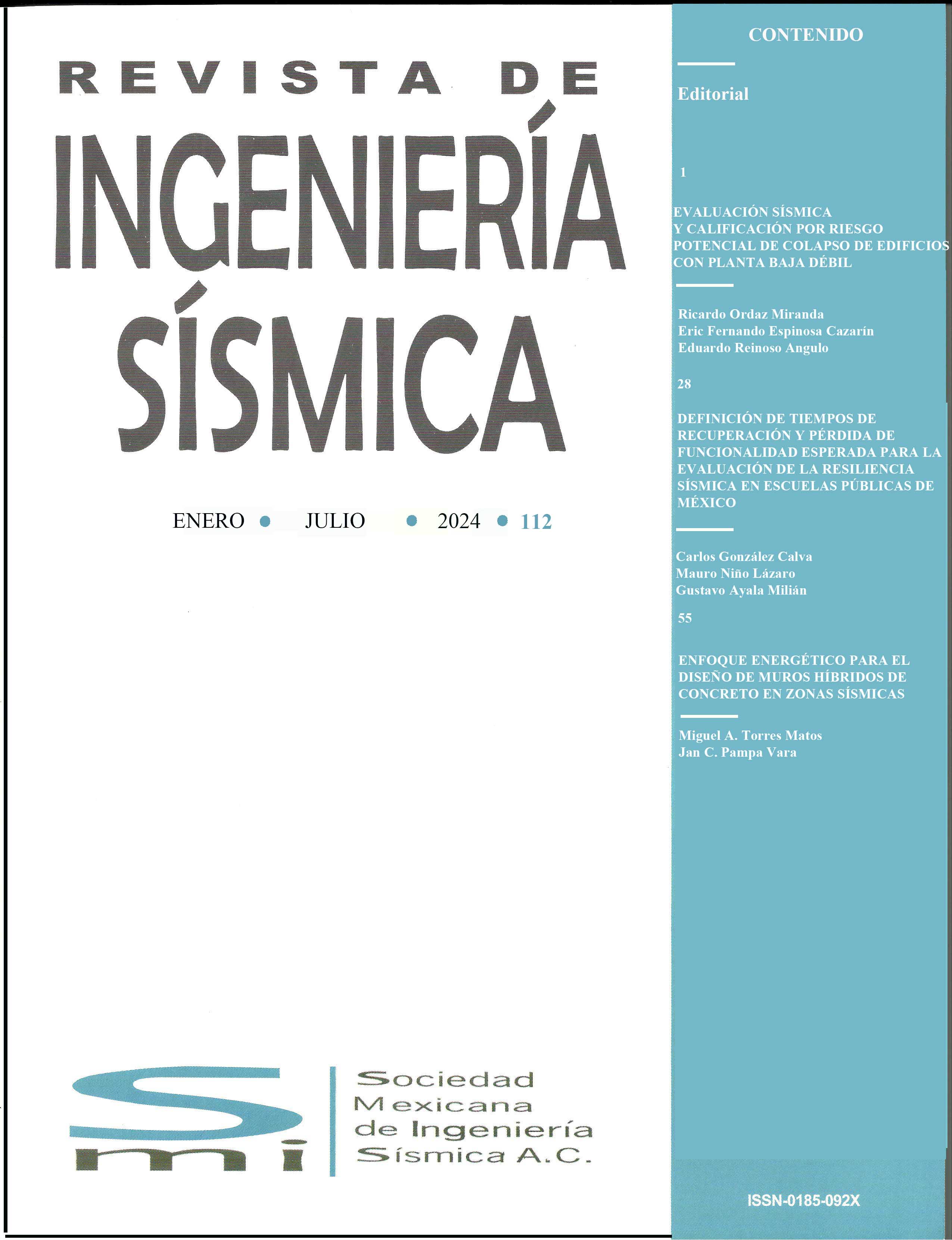Artículos más leídos del mismo autor/a
- Roberto Quaas, SISTEMA UNIVERSAL DE REDUCCION DE DATOS ACELEROGRAFICOS DIGITALES EN PC , Revista Ingeniería Sísmica : Núm. 37 (1989)

A nombre de la Sociedad Mexicana de Ingeniería Sísmica (SMIS), tenemos el honor de presentar la edición del número centenario de la Revista de Ingeniería Sísmica, correspondiente al semestre enero-junio de 2019, lo cual nos llena de satisfacción y orgullo.
Revista Ingeniería Sísmica, año 63. Es una publicación continua editada por la Sociedad Mexicana de Ingeniería Sísmica A. C., Calle Camino Santa Teresa 187 despacho 12, Col. Parques del Pedregal, Delegación Tlalpan, C.P. 14010, Tel. 5665-8377, https://smis.org.mx/, smis@smis.org.mx. Editores responsables: Dr. Edén Bojórquez Mora y Dr. Francisco Leonel Silva González. Reservas de Derechos al Uso Exclusivo No. 04-2014-052714093500-203, ISSN electrónico 2395-8251 , ambos otorgados por el Instituto Nacional del Derecho de Autor. Responsables de la última actualización de este número: Dr. Edén Bojórquez Mora y Dr. Francisco Leonel Silva González. Las opiniones expresadas por los autores no necesariamente reflejan la postura del editor de la publicación. Queda estrictamente prohibida la reproducción total o parcial de los contenidos e imágenes de la publicación sin previa autorización de la Sociedad Mexicana de Ingeniería Sísmica A.C.
